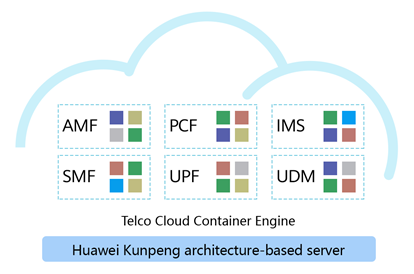5G-oriented Telco Cloud: Service-centric, Unleashing the Value of Network Transformation
As the road toward cloud-based network evolution is paved and the destination cloud-based architecture become clearer, telecom network cloudification is cemented. With 5G, carriers focus on agile service rollout, differentiated requirements, and deterministic SLAs, further accelerating network cloudification.

5G Demands Cloud Networks More Agile
As 5G is deployed worldwide, intelligent, digital innovation based on next-generation ICT is expanding across industries. 5G will be vital in fields such as smart industry, smart agriculture, smart city, and next-generation home entertainment, significantly improving bandwidth, latency, connection capacity, and spectrum efficiency. To propel service innovation in carrier services, Huawei endeavor to meet differentiated service requirements of enterprise customers in vertical industries, and offer flexible and quick cloud-driven service deployment. Additionally, containerized software development has become the industry trend, and containerized software will run on telecom cloud hardware platforms.
5G-oriented Telco Cloud
Comprehensive 5G Innovation and Agile Service Rollout
Huawei believes that the key to carrier cloud transformation is software reconstruction on core networks, unleashing tremendous software value of the Cloud Native architecture. A cloud-based solution should be selected for service value, avoiding redundant integration and O&M workload.
Huawei’s 5G core network is designed to realize cloud value by optimizing software architecture. It adopts the stateless architecture design (load balancing layer, service processing layer, and database layer), complying with the Cloud Native concept and ensuring cloud flexibility and agility. It also provides carrier-class reliability and system performance with high throughput.
Huawei 5G core network uses a microservice-based architecture, with each NE divided into several independent microservices which communicate and are managed through a unified service governance framework. To develop a new service, only the relevant microservices need to be reconstructed without affecting other services, avoiding reconstruction of the whole NE. New service deployments can now be completed within a weekend. This greatly improves service agility and better meets 5G service requirements.

Huawei 5G-oriented Telco Cloud adopts innovative hardware platforms providing high-performance computing capabilities and containerization. This supplies carriers with more agile and lightweight network construction options. Product combination across entire core network is supported and services can be rolled out quickly.
5G-oriented Telco Cloud, as the cornerstone of network transformation, focuses on building networks that enable service innovation. Through software architecture reconstruction and independent hardware innovation, 5G network value can be unleashed in a fast, secure, and controlled way.